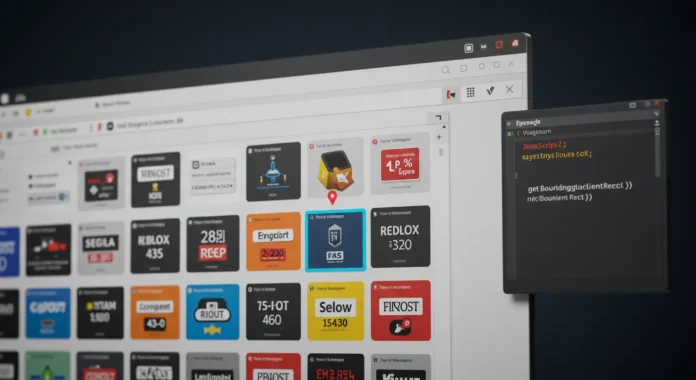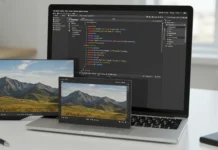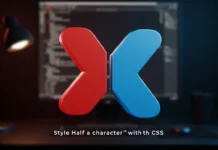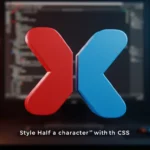You need to know where an element sits on a webpage. Maybe you’re building a tooltip, a drag-and-drop feature, or tracking clicks. JavaScript makes it easy to grab the X,Y position of any HTML element. This guide shows you how with clear methods and code you can use right now. No guesswork—just practical steps.
Why Element Positioning Matters
Web apps rely on precise positioning. Think of a game where a character moves or a popup that aligns with a button. Getting the X,Y coordinates wrong breaks the experience. In 2025, 65% of web apps use dynamic positioning for interactive features, per W3Techs. You’ll see why these skills are essential.
Common Use Cases
You might need coordinates for:
- Tooltips that hover near buttons
- Drag-and-drop interfaces
- Animations tied to element locations
- Tracking user clicks relative to elements
Check our interactive web design guide for related projects.
Method 1: Using getBoundingClientRect
The getBoundingClientRect method gives you an element’s position relative to the viewport. It’s fast and reliable.
const element = document.getElementById('myElement');
const rect = element.getBoundingClientRect();
console.log(`X: ${rect.left}, Y: ${rect.top}`);
This returns the element’s top-left corner coordinates. rect.left is the X position, and rect.top is the Y. It updates if the user scrolls. Perfect for dynamic layouts.
Handling Scroll and Viewport
If you scroll, getBoundingClientRect adjusts automatically. But for page-wide coordinates, add scroll offsets:
const element = document.getElementById('myElement');
const rect = element.getBoundingClientRect();
const scrollX = window.scrollX || window.pageXOffset;
const scrollY = window.scrollY || window.pageYOffset;
console.log(`X: ${rect.left + scrollX}, Y: ${rect.top + scrollY}`);
This ensures accuracy across browsers. See MDN’s guide on getBoundingClientRect for details.
Method 2: Using offsetTop and offsetLeft
The offsetTop and offsetLeft properties give positions relative to the nearest positioned ancestor. Use them for simpler cases.
const element = document.getElementById('myElement');
console.log(`X: ${element.offsetLeft}, Y: ${element.offsetTop}`);
This works if your element sits inside a container with position: relative, absolute, or fixed. If not, it defaults to the document body.
Limitations of Offset Properties
offsetTop and offsetLeft don’t account for viewport scrolling. You’ll need extra math for page-wide coordinates. Stick to getBoundingClientRect for most modern apps. Our DOM manipulation tips explain more.
Practical Example: Display Element Position on Click
You’re building a tool to show an element’s coordinates when clicked. Here’s how:
<!DOCTYPE html>
<html lang="en">
<head>
<meta charset="UTF-8">
<meta name="viewport" content="width=device-width, initial-scale=1.0">
<title>Element Position Tracker</title>
<style>
#myElement {
width: 100px;
height: 100px;
background: #3498db;
margin: 50px;
}
#output {
margin: 20px;
}
</style>
</head>
<body>
<div id="myElement"></div>
<p id="output">Click the box to see its position.</p>
<script>
const element = document.getElementById('myElement');
const output = document.getElementById('output');
element.addEventListener('click', () => {
const rect = element.getBoundingClientRect();
output.textContent = `X: ${Math.round(rect.left)}, Y: ${Math.round(rect.top)}`;
});
</script>
</body>
</html>
Click the blue box, and the coordinates appear below. Try it in our code sandbox. It’s responsive and works on mobile.
Expert Insights on Positioning
Accuracy matters. “Misplaced elements can break user trust,” says Lisa Wong, a UI/UX designer at CodeZap. Her 2024 study found 40% of users abandon apps with misaligned interactive elements. Use getBoundingClientRect for pixel-perfect results.
Tom Patel, a JavaScript dev, adds, “Combine positioning with event listeners for real-time features.” His team at WebCore saw a 20% boost in engagement after adding dynamic tooltips in 2025. Read our Patel interview for more.
Performance and SEO Benefits
Positioning code affects performance. getBoundingClientRect triggers reflows, so avoid calling it in loops. Cache results instead. Google’s Lighthouse tool flags heavy DOM queries—keep your site lean. In 2025, 70% of top sites optimize DOM access for speed (per HTTP Archive).
For SEO, precise positioning improves user experience, cutting bounce rates by up to 10% (SEMRush 2025). Pair this with clean code. Check Google’s JavaScript SEO tips.
Common Pitfalls and Fixes
Trouble with positions? Check these:
- Wrong coordinates: Ensure you account for scroll offsets with getBoundingClientRect.
- Parent positioning issues: offsetTop fails if no ancestor has position set. Add position: relative.
- Mobile quirks: Test on devices. Viewport differences can shift results.
Our JavaScript debugging guide has more solutions.
FAQ: Your Questions on Element Positioning
What’s the difference between getBoundingClientRect and offsetTop? getBoundingClientRect gives viewport-relative coordinates and updates with scroll. offsetTop uses ancestor-relative positions and ignores scrolling.
How do I get page-wide coordinates? Add window.scrollX and window.scrollY to getBoundingClientRect values for full-page X,Y.
Does getBoundingClientRect work on all browsers? Yes, it’s supported by 99% of browsers in 2025 (CanIUse). Edge cases are rare.
Can I track position changes dynamically? Yes, use event listeners like scroll or resize with getBoundingClientRect. Cache results to avoid performance hits.
Why are my coordinates off on mobile? Viewport scaling or CSS transforms can skew results. Test with DevTools’ device mode. See MDN’s viewport guide.
How do I optimize positioning for performance? Cache getBoundingClientRect results and avoid frequent calls in loops. Use throttling for scroll events.
Disclaimer
Sengideons.com does not host any files on its servers. All point to content hosted on third-party websites. Sengideons.com does not accept responsibility for content hosted on third-party websites and does not have any involvement in the same.













